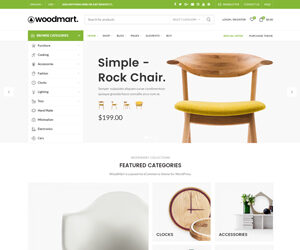FREQUENTLY ASKED QUESTIONS
When looking for a first accordion to begin learning to play on, there are a multitude of different makes and models available, as well as a huge range of different prices, sizes and weights. This wide choice can often be somewhat confusing. In this guide, we’ve attempted to answer a few of the most common questions that people tend to ask us, such as pricing, size, tuning and more.
One of the things that many people find most important when looking for their first accordion is price. Compared to many other musical instruments, accordions can at first seem extremely expensive. For example, you can often get an excellent quality guitar for around £500, but for the same amount, you would normally only be looking at an entry-level accordion.
This is partly due to the fact that all accordions, even the most basic models, are still fully built by hand, and due to the extremely complex nature of the production process, contain literally thousands of different components that must be painstakingly fitted. It is not unusual for a top quality accordion to take well over six months to produce.
If looking for a relatively cheap starter instrument, many people often go for the entry level Chinese student models, which will nearly always be the most affordable option. One of the main advantages of going down this route is that you can get a brand new accordion for less than £500!
Although an accordion built in China will be ideal for starting off with, and certainly isn’t going to fall apart overnight, both the tone and build quality will, however, be noticeably lower than in a European built accordion.
With this in mind, most people who take to it do usually find themselves wanting to upgrade within a year or so. A new Chinese accordion is still one of the cheapest ways to get into playing. Just as long as you’re not expecting to get an accordion for life!
However, for just a few hundred pounds more, you could get a pre-owned accordion built in Germany or the Czech Republic, or even occasionally an older style Italian instrument, all of which would usually be significantly better built and would boast a richer, more versatile tone. In this price bracket, you can find many instruments from the likes of Weltmeister, Delica, and the highly respected West German Hohner company.
Another major consideration to bear in mind when purchasing an accordion, is size. Sadly, no accordion is a truly lightweight or compact instrument, but there is, however, a wide range of sizes and weights, so most people will be able to find something that is comfortable to play.
In terms of which size is best to start on when choosing an accordion, there is a common misconception that small accordions are for beginners. This is most certainly not true. Small accordions are for small people!
Today, there are a large variety of bass sizes available. We have listed the most common ones below, along with the various treble key ranges that are available.
8 bass – Either 17 or 22 treble keys. A very small child’s accordion. These are really too small for anybody over the age of five years old, and are usually only sold as children’s toys, with the notable exception of the Hohner Mignon which is a “real” accordion.
12 bass – Normally 26 treble keys. Also very much a children’s accordion, mainly targeted at the under tens. These instruments have no minor buttons and are very limited in their range.
24 bass and 32 bass – These are also really aimed at children, although they do have a larger range than their smaller cousins. These are the smallest accordions to introduce minor chords, and some higher spec models occasionally feature seventh chords. The treble range is usually 26 keys.
48 bass – The smallest “adult size” accordion, but only if you’re a very small adult! These accordions are the smallest size to feature the full range of chords and normally have major, minor, sevenths and diminished buttons. Most 48 bass accordions feature 26 keys, although extended keyboard models with 30 keys are also available from some manufactures, as well as much larger 34 key versions, although these will lose out on the diminished row.
60 bass – These accordions are not generally made any more, with the exception of the Harmona Rubin and the Paolo Soprani Professionale, although pre-owned examples are often available. 60 bass accordions usually feature either 30 or 34 keys, and have nearly the same bass range as a 72 bass instrument, with the exception of the diminished row which is deleted. Due to the lack of diminished chords, 60 bass accordions are often a bit lighter in terms of weight than their 72 bass counterparts, and therefore are popular with players who need to move around whilst playing, for example Morris musicians, and players who only play relatively simple music not requiring diminished chords.
72 bass – This is a mid size accordion, and one of the most popular sizes in the UK. 34 keys is the norm, although 26 and 30 key “hybrid” models are increasingly being produced by some of the high end Italian factories for the weight conscious player. 72 bass accordions can feature either two, three or four voices, with the latter option normally being tuned to either musette or double octave.
80 bass – 80 bass accordions are designed along similar lines to the aforementioned 60 bass instruments, in that they have the left hand range of a 96 bass but with no diminished chords. These accordions nearly always feature 37 treble keys, and, with the exemption of a few small factories, are very rarely made nowadays as a mainstream model. These instruments often have a three voice tuning, although four voice examples aren’t unheard of.
96 bass – Another hugely popular size in the UK, 96 bass accordions either have 37 or 34 keys, and are often viewed as a good compromise, as they don’t have the size and weight of a full size 120 bass instrument, but do have enough notes to play fairly complicated advanced pieces which would be lacking in a smaller instrument. There are a vast range of makes and models available, with three and four voice being the most common tunings.
120 bass – A full size accordion, traditionally with 41 treble keys, although nowadays some factories also produce compact versions with 37 keys. A 120 bass instrument is the most versatile size, as it features the full range of treble and bass notes, as well as a larger variety of couplers, with three, four and five voice tunings all available. The downside to this is that 120 bass accordions are rather large and heavy, so may not always be ideal for the smaller player. Occasionally, some of the Italian makers will also produce instruments with more bass buttons, normally 132. This is achieved by squaring off the ends of the normally diagonal bass layout.
A special note on 120 bass “ladies models” – An exemption to the rule with 120 bass accordions are the special compact accordions generally referred to as “Ladies Models”. These instruments were produced by various Italian factories from the late 1940’s up until the early 1970’s. They tend to feature the full range of 41 treble keys and 120 bass buttons, but were extremely lightweight and compact, often being not much larger or heavier than a standard size 72 bass, or in extreme cases, even a 48 bass! This was achieved by making both the treble keys and bass buttons extremely small and close together, and fitting them with significantly less voices than normal, usually a two voice setup. Due to the very small spaces between the keys, these instruments aren’t really suitable for those with larger hands, but are, by the same token, ideal for the smaller player who wishes to have the full range of notes, but can’t handle the size and weight of a full size 120. Unfortunately, these aren’t produced new any more, but pre-owned examples do often turn up for sale from time to time.




